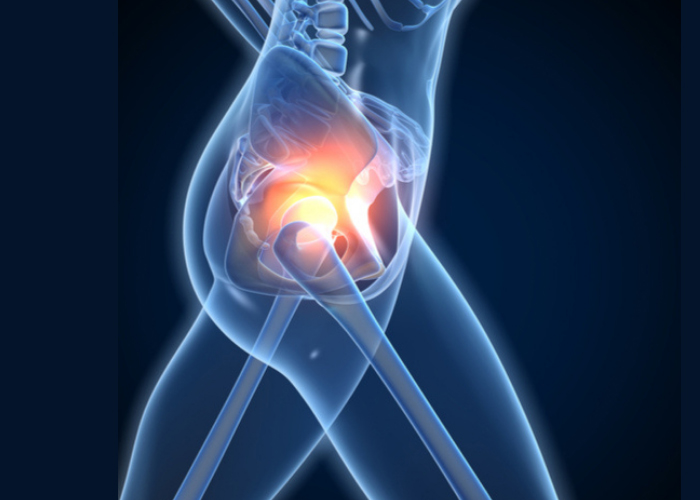What are loose bodies in the hip?
The hip joint is formed by the connection of the head of the femur (thigh bone) into the socket of the acetabulum (pelvis). This ball-and-socket configuration allows the hip joint to rotate in several directions. When an individual sustains an injury, such as a fall directly on the hip, a motor vehicle collision, or an aggressive tackle in football, small bits of the bone or articular cartilage can break off and are left to “float” in the joint space. Osteoarthritis and other degenerative joint conditions can also result in loose bodies in the hip. These bone and/or articular cartilage fragments can become lodged within the joint space and lead to a variety of symptoms for different individuals. Dr. Ronak Mukesh Patel, orthopedic hip specialist serving patients in Sugar Land, Pearland, and the Houston, Texas area, has the knowledge and understanding as well as substantial experience in treating patients who have experienced loose bodies in the hip.

What are the symptoms of loose bodies in the hip?
The majority of patients with loose bodies in the hip do not report any symptoms at all. However, other times, a sudden and sharp pain is reported causing hip movement to be difficult. The most common complaint of loose bodies in the hip is a “locking” or “catching” sensation with hip joint movement. When the tissue fragments are left to “float” within the joint space, they can become embedded in the hip causing a sensation similar to having a “pebble in one’s shoe”. Some other common symptoms of loose bodies in the hip can include:
- Hip pain
- Decreased range of motion of the hip
- Hip stiffness
- A “clicking” or “grinding” sensation with joint movement
- Catching or locking of the hip
- Popping sensation in the hip
How are loose bodies in the hip diagnosed?
When loose bodies in the hip are suspected, Dr. Patel will first gather a complete medical history to include any precipitating injuries or prior hip conditions. This is followed by a thorough physical examination involving specific hip movements and tests. Diagnostic imaging studies, such as x-rays, magnetic resonance imaging (MRI), and/or computed tomography (CT) scan, are the best tools for confirming a diagnosis of loose bodies in the hip as well as identifying any damage to the other hip joint structures.
What is the treatment for loose bodies in the hip?
Non-surgical treatment:
Non-surgical therapy measures are often the initial treatment for patients experiencing symptoms of loose bodies in the hip. To minimize the stress and movement of the hip joint, weight-bearing should be limited with the assistance of crutches or a walker. Modifying a daily routine in combination with non-steroidal anti-inflammatory medications (NSAIDs) is encouraged for pain and inflammation management. If these symptoms still persist with oral medications, a corticosteroid injection can be administered directly into the hip joint. A physical rehabilitation program may also be prescribed to restore hip mobility and range of motion.
Surgical treatment:
If multiple loose bodies are confirmed in the hip, or in the event of failed non-surgical therapy, surgical intervention may be necessary to restore the hip joint. The loose bodies can be surgically removed through a minimally invasive arthroscopic procedure using a small camera (arthroscope) and specialized surgical instruments. This surgical technique is often favored by surgeons and patients alike as the small incisions can decrease recovery time in addition to reducing the risk of infection and blood loss.
Hip Injury Specialist

Have you experienced a traumatic injury to the hip, or have you been diagnosed with a degenerative joint condition? If so, you may be at an increased risk of experiencing a loose body in the hip. Loose bodies occur when a small bone or cartilage fragment breaks off the joint and “floats” in the joint space. Hip specialist Dr. Ronak Mukesh Patel provides diagnosis and treatment for patients Houston, Sugar Land, and Pearland, TX who are experiencing symptoms that may indicate loose bodies. Contact Dr. Patel’s team today!








